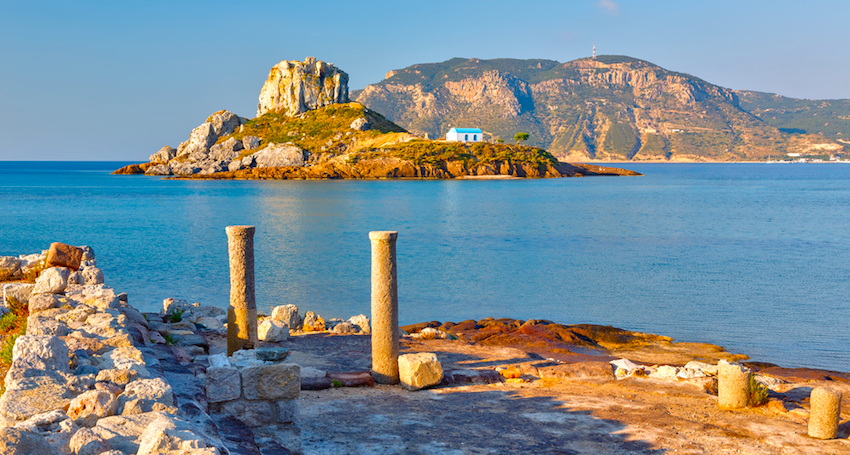
KOS - The Land of The God of Medicine
.png) |
 |
Kos is most famous for being the birthplace of Hippocrates, the father of modern medicine. Its fertile land, beauty, and strategic location meant that it was coveted by many over the course of history, and its unique past has been formed by the alternating reigns of many. The island is sprinkled with archeological gems, some of which date back over 3000 years! These include castles, ancient temples, Roman theaters, and ancient agora. The Asklepion is perhaps the island’s most significant and well-known historical site. It is the oldest and most eminent healing centers of the ancient world. Dedicated to the god Asklepius, son of Apollo and god of medicine and health, the Asklepion functioned as a therapeutic complex well into the Roman era.
A coastal view of Kos boasts crystalline waters back dropped by fertile, mountainous terrain. The third largest island of the Dodecanese Greek island chain, Kos’s geography and landscape are amongst the most convincing reasons to visit the island. The fresh island air has a seductive quality; while the relaxing sunshine, picturesque mountain villages, and pristine beach towns are frequently the top choice for travelers.
Kos’s climate is classically Mediterranean. Hot summers and mild winters make planning a visit to Kos easy. You can count on sunshine between May and October, with the hottest months being July and August.
Top things to see and do in Kos Island
Hippocrates Plane Tree - Located directly in front of the Castle of the Knights is the famous Hippocrates Plane Tree. Hippocrates is recognized as the founder of modern medicine, and is renowned as the most respected doctor of the ancient world! Born in Kos in 460 B.C., he was also known for his philosophies and humanitarianism. To this day, medical graduates from around the world recite the Hippocratic Oath and use it as a guideline in their medical practices. The Medical School of Kos houses roughly 60 volumes of writings by Hippocrates. The Hippocrates Plane Tree is famous for being the tree that Hippocrates allegedly taught under. It is one of the oldest in the world, and one of the largest in all of Europe with a perimeter of over 39 feet. Locals believe the tree to have been planted by the father of medicine himself. According to local legend, the Apostle Paul also employed the tree’s shade for his lessons. It is at the epicenter of many of Kos’s cultural festivities during the summertime.
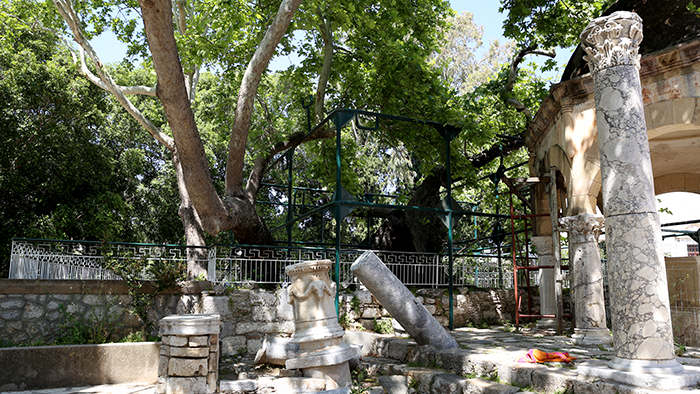
Nerantizia Castle - The Nerantizia Castle, affectionately dubbed Kos Castle by locals and visitors alike, dominates the island’s main harbor and Kos town. It is the first thing that you notice as you approach the island by boat, and what a rewarding view it is! The castle was built by the Knights of Saint John during their reign between 1314 and 1512. The exterior was at long last completed in 1524, while the exterior was not completed until 1748.
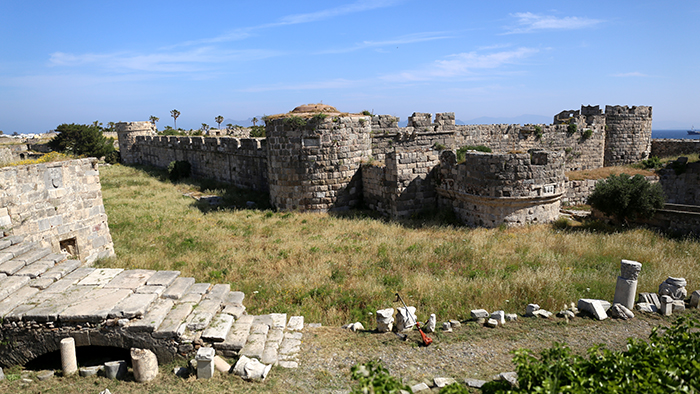
Ancient Agora - The Ancient Agora, or marketplace, is an excavation area comprised of a series of ruins dating back to the fourth century B.C. It is conveniently located next to the port, and bordered by a wall that is over 60 feet in length and eight feet tall. Once the island’s main trading center, the Agoria features the ruins of a temple that was possibly dedicated to Hercules, and a shrine to Aphrodite. The columns of the stoa, or covered walkway, date back to the third century B.C. The actual market that once dominated the area was strategically located next to the port, Kos Town, Kos’s economical backbone. The Agora was the perfect spot for trading and the movement of local goods. The Agora ruins are located to the south of the Kos Castle and next to what the locals affectionately refer to as “the bar street.”
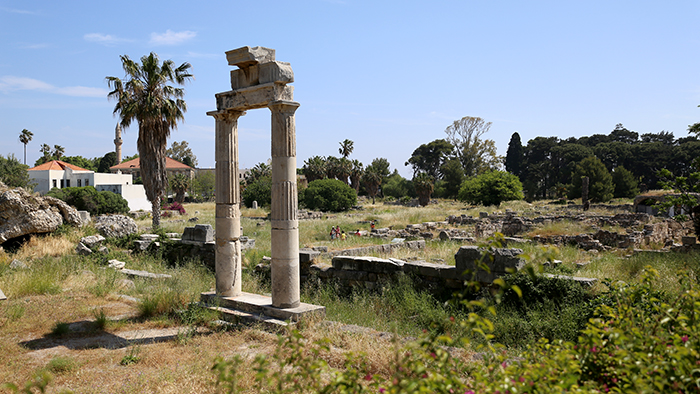
Asklepion - Located about 3km outside of Kos, the Asklepion is the most celebrated archaeological site on the island. It was the healing center of the Greek god Asklepius, son of Apollo and god of medicine. Often referred to as a “Jesus Christ figure,” Greek mythology states that Asklepius was capable of raising the dead and healing sick people by appearing in the form of a serpent in the night. The symbol of a snake wrappedaround a scepter is known as today as the universal symbol for medicine. The Asklepion in Kos, though not the only one of its kind, is one of the largest ancient healing centers of the ancient world. It served as a sanatorium dedicated healing the sick with natural remedies and restorative therapies. Hippocrates himself taught here, along with many other significant historical figures. Excavations began in 1902, and uncovered the four levels that comprised the Asklepion, one of which was used as a spa. Nearby springs from Mount Dikeo supplied the healing waters for patients. Visitors will be able to walk freely around the large complex admiring the ruins.
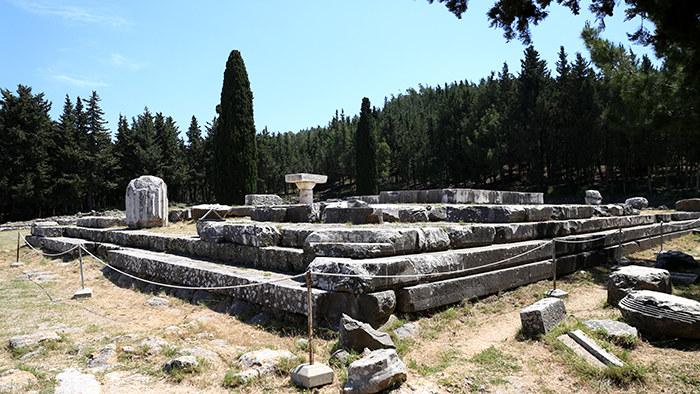
Castle of Antimachia - The Castle of Antimachia rests scenically on a hill overlooking the village of Antimachia. Constructed in the 14th century by The Order of The Knights of Saint John around the same time as Nerantzia Castle, the exterior fortifications have extraordinarily withstood the centuries and numerous attacks. This is largely due to its strategic location amongst rugged terrain and ravines. Construction was completed in the 15th century, with the only entrance to the castle located on the northern side. The entrance is protected by impressive double gates and marked with a marble relief of the emblem of the Order of Saint John dated 1494.

The Beaches of Kos
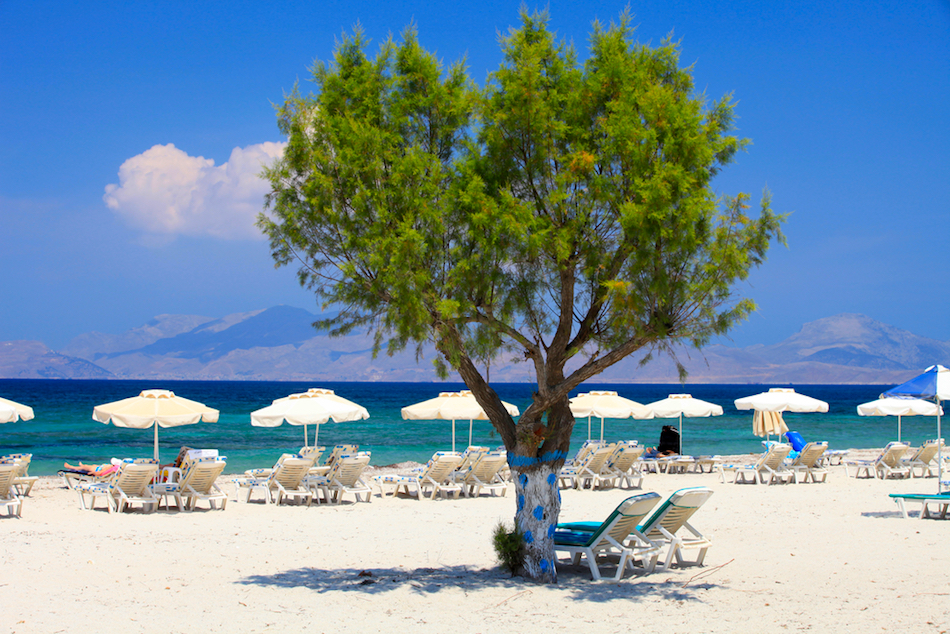
The beaches in Kos are some of the most beautiful in the Dodecanese islands and its waters consider the most crystal clean in Greece. The majority of Kos beaches are sandy with crystal blue waters. Many Kos beaches are organized and offer plenty of tourist facilities, like Kardamena, Paradise, Camel, while others are secluded and frequented by naturists. You will find below a list with the best beaches in Kos island:
Camel Beach - Camel Beach got its name for the large rock on the shoreline, which, when viewed from the sea, resembles a camel. The waters are calm and ideal for swimming if you do not mind that they are a little cold. The beach itself is somewhat off the grid, though there is nearby parking and a few beach chairs with shading umbrellas.
Kardamena - Kardamena is amongst Kos’s most popular beaches. It offers a wealth of watersports opportunities and a warm stretch of white sand beach. Kardamena village is quaint, with clusters of houses pushed right up against the short line, and docks lined with local fishing boats. Additionally, the archeological site The Temple of Apollo is nearby.
Paradise Beach - Paradise Beach is located adjacent to the village of Kefalos, and roughly 19 miles from Kos Town. The shoreline has plenty of sunbeds and umbrellas, as well as a watersports center. Paradise’s waters are beautiful, warm, and clear. Sometimes referred to as Bubble Beach, visitors should consider snorkeling to see the underwater bubbles resulting from the active volcano of Nisyros Island.
For lovers of sand and sea, Kos does not disappoint. The island boasts stunning beaches and lovely harbors.

















